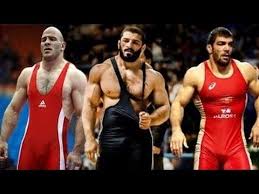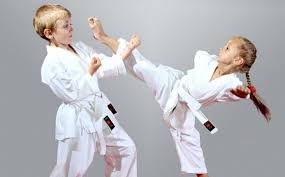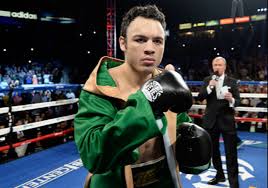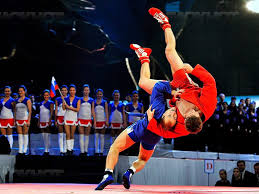REQUIREMENTS FOR EQUIPMENT AND APPEARANCE OF THE WRESTLER
 Before the bout (before weighing), the judge without fail checks the nails on the hands of athletes: they must be cut short. The presence of bristles on the face is not allowed: the wrestler must have either a neat mature beard, or he must be smoothly shaved on the day of the competition. The hair should be cut short or, at the request of the referee, tied back.
Before the bout (before weighing), the judge without fail checks the nails on the hands of athletes: they must be cut short. The presence of bristles on the face is not allowed: the wrestler must have either a neat mature beard, or he must be smoothly shaved on the day of the competition. The hair should be cut short or, at the request of the referee, tied back.
The wrestler’s equipment consists of leotards, swimming trunks, special shoes and a handkerchief. The scarf should be tucked in tights. This rule has been preserved since when scarves were used to wipe saliva, blood, and sweat. Now for these purposes various antiseptic sprays, plasters and so on are used. funds, but, nevertheless, the old rule has been strictly observed so far.
Wrestlers should not sweat on the carpet. It is forbidden to lubricate the body with any grease. In addition, wrestlers at the time of the fight should not wear anything that could cause injury to the athlete or his opponent: rings, earrings, bracelets, etc.
COMPETITION FORMULA AND WEIGHT CATEGORIES.
At the first Olympic Games of modern times in Athens in 1896, the division into weight categories among wrestlers was absent. Then they were introduced, after which the division into weight categories changed more than once – in Greco-Roman and free-style wrestling.
Regular amendments were made before the Olympic Games in Sydney. Instead of 8 categories in Greco-Roman and 10 in freestyle wrestling, competitions were held in 7 weight categories: up to 54, up to 58, up to 63, up to 76, up to 85, up to 97 and up to 130 kg. Each weight category included 20 athletes: eight who won the top places at the 1999 World Championship (in the Olympic year the world championship is not played), seven of the best wrestlers in the series of international Grand Prix, and five more – in the results of regional tournaments in Europe, Asia, Oceania, Africa and America. (Usually, the host country of the Games receives seats in the Olympic tournament automatically, but this rule was also changed before the 2000 Games).
The formula for holding the Olympic wrestling tournament has also changed: 20 wrestlers in each weight category were divided into 6 pools in random order, and not into pairs, as it was before. Each athlete met with the fighters of his pool. The winners of two pools of 4 fighters went to the semifinals, and the winners of four pools of 3 fighters fought in the quarter finals. The winners of the semi-finals played gold and silver medals among themselves, and the losers fought for the “bronze”.
However, these “Olympic” innovations were not the last. Since January 1, 2002, the weight categories in Greco-Roman and freestyle wrestling for adult sportsmen (no younger than 20 years old) look somewhat different: up to 55, up to 60, up to 66, up to 74, up to 84, up to 96 and up to 120 kg. In addition, the world championships and continental championships have a different pool system: the number of athletes in the pool depends on the total number of participants in a particular weight category.




